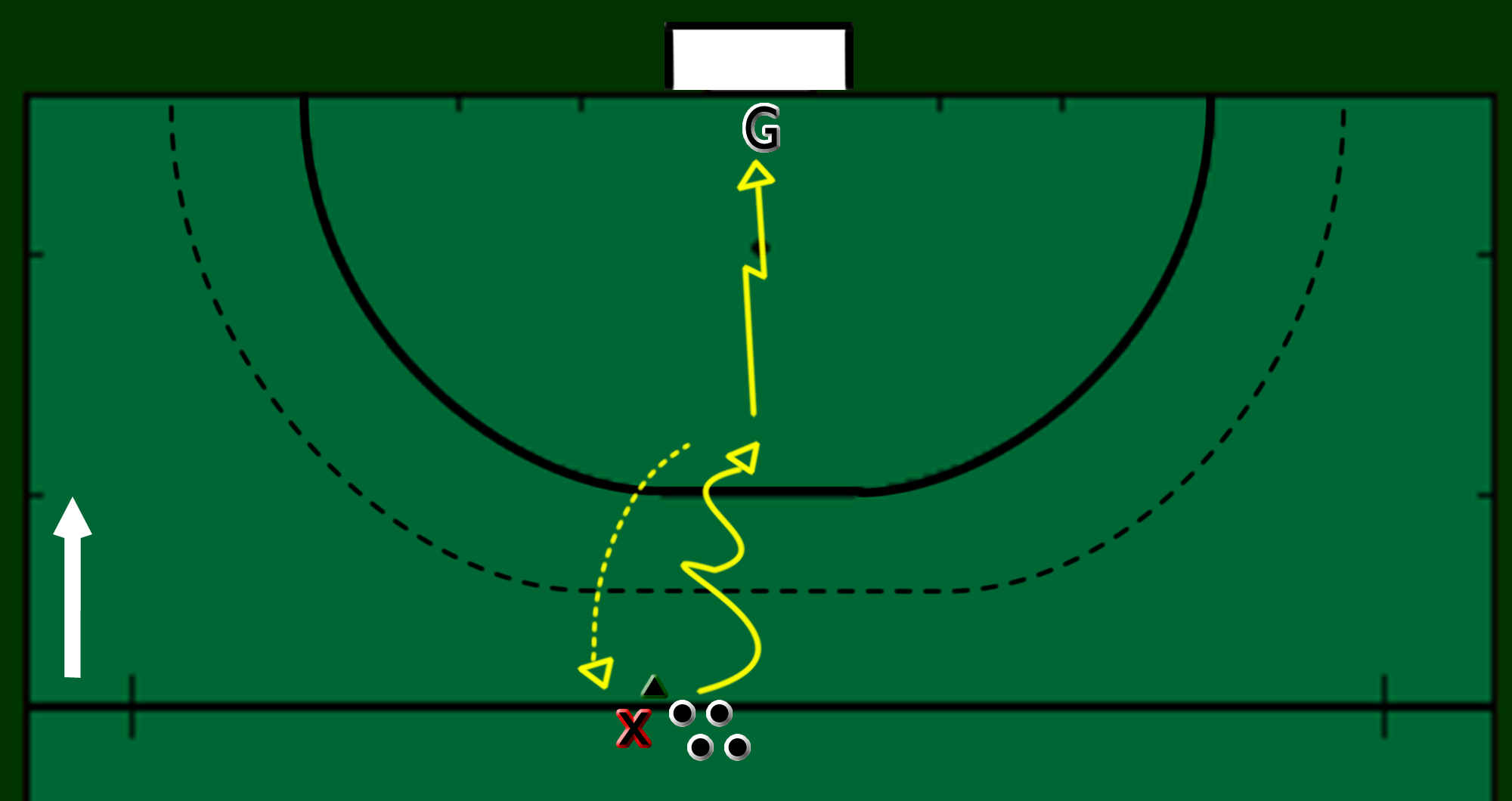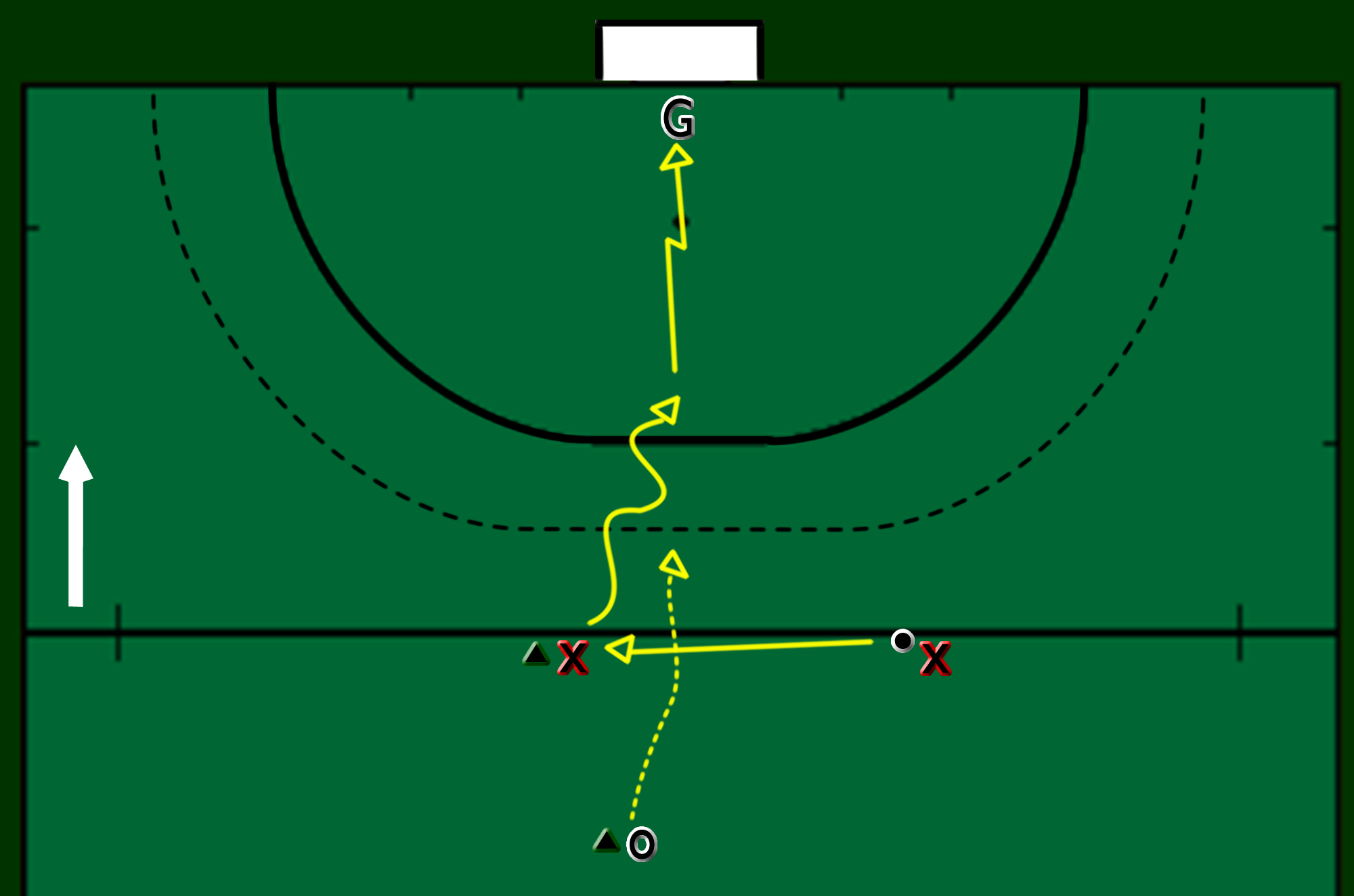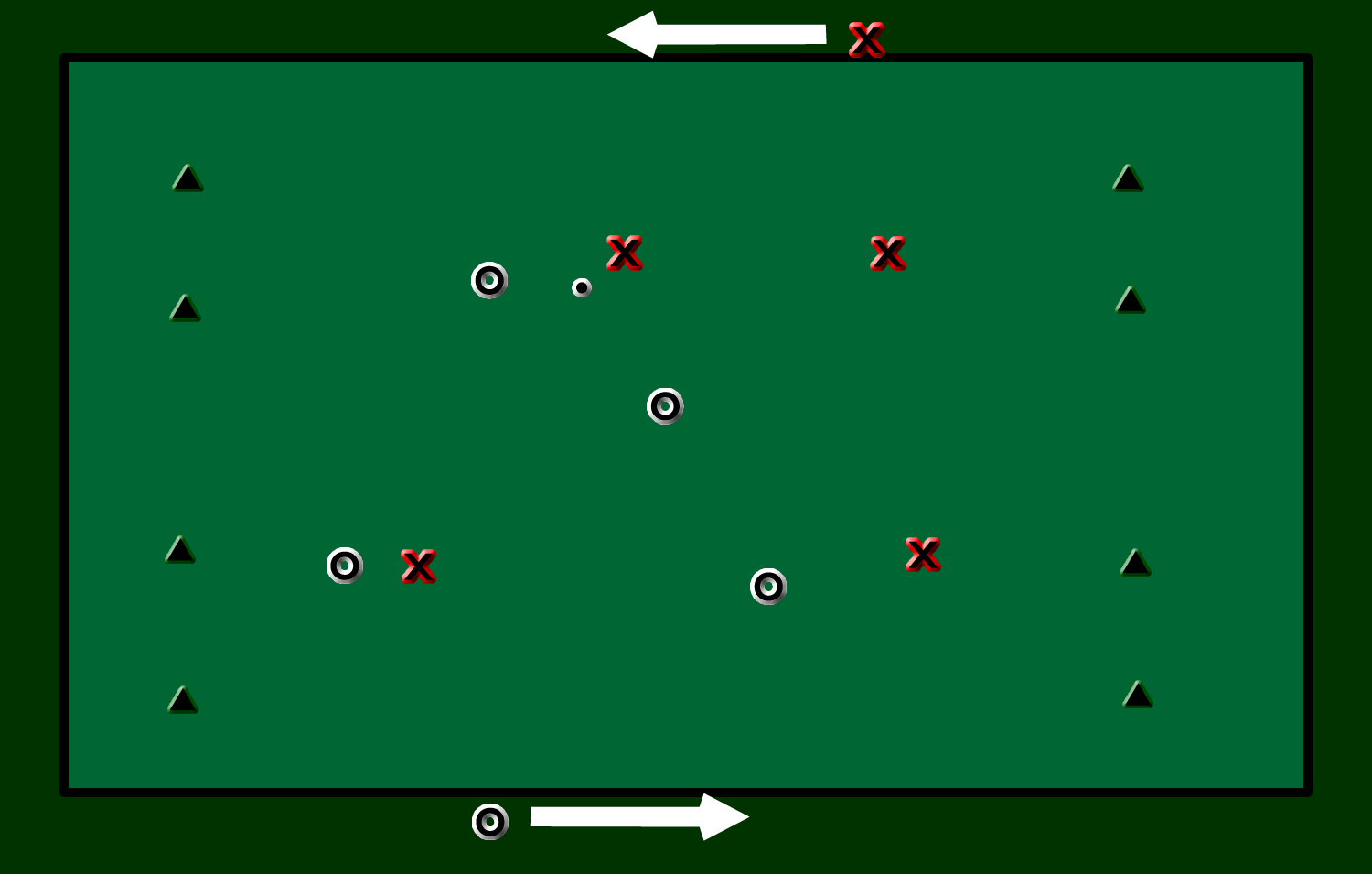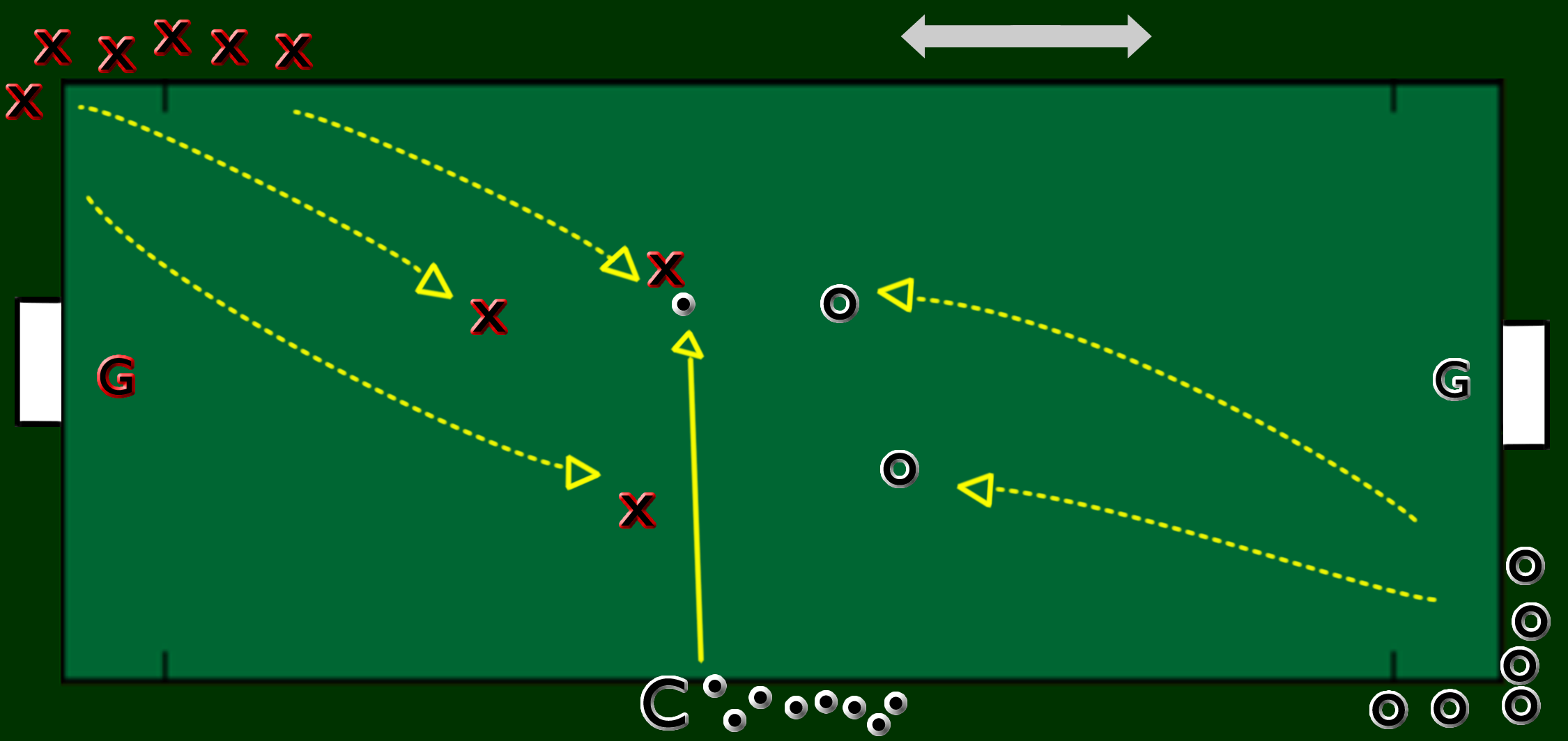STAGES OF THE GAME - TRAINING TO TRAIN
Between the ages of 12-16, players are developing the physical skills to play effectively within a team in a larger space and, and are ready to be introduced to more complex team concepts in all areas of the game.
SKILL REPETITION & GAME CONTEXT:
Repetition of key basic skills is certainly an emphasis during this stage. It is also important to put technical skills into game context (incorporating spacial, tactical, decision-making elements). This will help to lay the foundation for a successful player development, and will result refinement of key technical skills in the particular ways needed at the next level.
For example:
Repetition - Basic Practice: X carries the ball from the 5m line into the circle, shoots, jogs back and repeats.

Game Context: Attacker receives a lateral pass at the 22m line, and attacks the circle on an angle. Defender is recovering from 5m behind, to create pressure and forcing the attacker to execute his shot quickly.

Both of these require the use of similar technical skills, but the second example re-creates a more game-like situation for the attacker. There is value in practicing both ways. Refining skill through repetition is important, and the first shooting drill here is an example of something that a player can easily do on his own. Executing the same skill under the influence of defensive pressure will help the player to become more effective in a similar situation in a game.
Customize your Practice
The above shooting drills are a very simple example of how to put a skill into game context. This is easy to do for any skill or situation on the field. The Training to Train Stage is a critical time to begin to move from basic skills and fun games, to introducing both concepts of Skill Repetition vs Game Context.
SMALL-SIDED GAMES and NUMBERS-UP/DOWN GAMES:
The introduction and frequent use of small-sided games is a key element of this stage of learning. This description includes numbers-up/down, conditioned games with specific rules regarding skills/space/goals, etc.
The use of smaller numbers allows more repetition of specific situations than full-field practice games. It also helps coaches to create challenging and stimulating new games for players to train with.
Small-Sided Game Example:
4 vs 4 - 4-Goal Game

This is just a simple 4 vs 4 game, with two gates as goals to score in by passing or carrying under control. Playing this game as 4 vs 4 or 3 vs 3 creates valuable repetition of specific situations in the defending, attacking and transition areas of the game. Conditions such as 3 touches per player possession can be put on the game to create different effects. In smaller game situations such as this, players learn that they must communicate effectively and work effectively within the small group in order to be effective and competitive.
Numbers-Up/Down Drill Example:
1/2/3 v 2

This drill alternately puts players in numbers-down, even-numbers, and numbers-up situations. It is a dynamic drill, fast-moving and fun, but also has a lot of lessons within it about transition, recognizing numerical situations, speeding up and slowing down the game, and much more. This combination makes it a great drill for learning at the Training to Train Stage of Development, although it has enough higher-level components that it can be valuable at the Training to Compete and Training to Win Stages.

